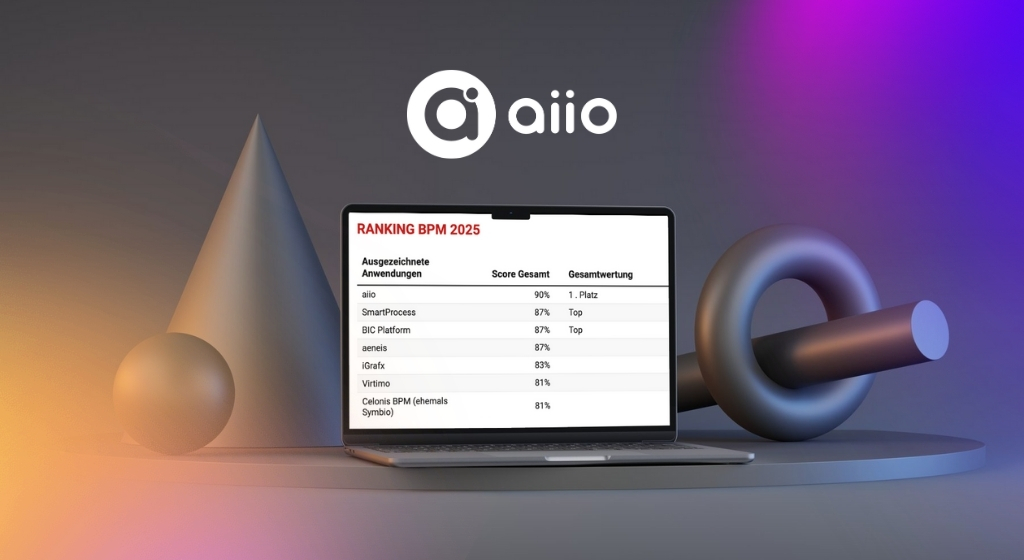Uncover hidden cost centers? This is how process management helps!
.jpeg)
Every company is different, but in a few points all (yes, ALL) companies, especially small and medium-sized enterprises in the world, are the same: none of them have money to give away. Completely logical, should not surprise anyone, because who has money to give away. Nevertheless, in a machinery as complex as modern companies are, it can be quite complicated to track down and then plug all the positions from which one or the other euro still leaks. Our solution: continuous process management. Process management can help small and medium-sized enterprises to find and eliminate hidden cost centers. In this blog post, we would like to go into more detail about how exactly this works.
Small and medium-sized enterprises often have many processes that have grown and been adapted over time to meet the company's requirements. However, these processes can be inefficient and costly because they are not always geared towards optimal use of (current) resources. This is exactly how most hidden cost centers arise, which are often overlooked because they have developed over a longer period of time or because they are not easy to identify (partly for this reason).
But how exactly can process management help here? Process management is a method for identifying, describing, analyzing and optimizing processes in a company. Structured process management helps to identify potential for improvement and to increase the efficiency and effectiveness of business activities. The crux here, of course, lies in the identification and improvement of the processes. Let's take a closer look at this.
The first phase of process management is the identification and description of the processes in the company. This involves recording all processes that exist in the company, from production to sales to accounting. Possible potential for improvement can already be identified here.
In the next phase, the processes are analyzed. This means that the processes are examined in more detail in order to find out which resources they consume and where possible weaknesses lie. This can include a detailed recording of the activities within the processes. For example, it can be determined whether a process contains manual work steps that can be automated. The analysis can also identify opportunities for improvement that can help to reduce costs.
In the third phase, the processes are optimized. This means that weak points are identified and eliminated to increase the efficiency and effectiveness of the processes. Optimization potentials can be achieved in the form of savings or improved processes. Meaningful optimization can also mean completely redesigning or digitizing processes.
Process management can therefore help to reduce costs in the company, as it offers a systematic approach to optimizing processes and thus improving the use of resources. Improved efficiency can, for example, lead to lower personnel costs if manual work steps are replaced by automation.
Another way to reduce costs is to avoid errors or unnecessary steps within processes. By analyzing the processes, points where errors can occur can be identified. By optimizing, such errors can be minimized or avoided.
In addition to cost reduction, process management can also help to improve the quality of products or services. Effective process optimization can lead to errors being minimized and customer satisfaction being increased. This increases the likelihood that customers will return and conduct further business with the company.
Sounds almost too good to be true, doesn't it? So why doesn't every SME already use process management? Well, let's call it...impatience. The introduction of process management requires a certain amount of effort and time. It may also be necessary to introduce new technologies or tools to facilitate the analysis and optimization of processes. It is important to understand that process management can lead to higher profitability and competitiveness of the company, especially in the long term.
In small or medium-sized enterprises, it may be useful to introduce process management gradually and initially only analyze the most important processes. A suitable starting point, for example, can be the analysis of the sales process, as this is a central function for the success of the company.
A successful introduction of process management also requires the support and involvement of employees. Employees who are directly involved in the processes can provide valuable insights and information that can help in the analysis and optimization of the processes. Transparent communication about the benefits of process management can help to increase understanding and acceptance among employees.
In summary, process management is an effective tool for identifying and resolving hidden cost centers in a company. Through a systematic analysis and optimization of processes, companies can improve their efficiency and effectiveness and thereby reduce costs. This can also lead to higher customer satisfaction and competitiveness. A successful introduction of process management requires careful planning, employee involvement and clear communication about the benefits.
Don't hesitate, ask directly
Please use our contact form. Our team will get back to you as soon as possible.

.jpeg)



